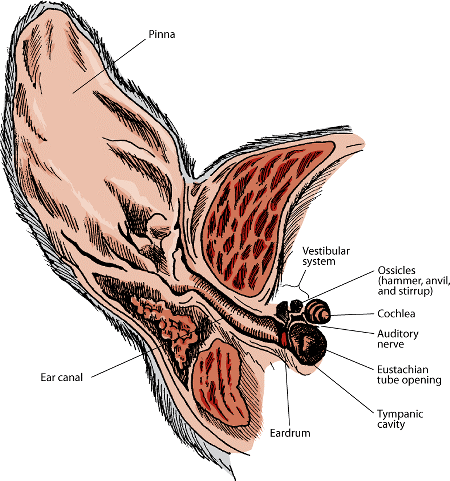Many dogs become deaf during their lifetime due to things such as the natural ageing process and ear infections as well as other health conditions, but most deaf dogs are deaf from birth due to genetics. This means that specific breeds have a higher prevalence of congenital sensorineural (genetic) deafness than others for example, bull terriers including staffies and roman nosed, cattle dogs, and dalmatians are all breeds known to have high deafness rates. So, what gene is responsible for deafness? in truth there are multiple genes that are beyond my knowledge and scientific ability to explain to you, but the most common ones are the Piebald gene and the Merle gene. The merle gene is a genetic pattern in the fur and sometimes on the skin. The piebald gene is responsible for the mottling colour typically around the head and neck.
So, for those of you who are geeks like me, let me give you some statistics. It is estimated that 30% of dalmatians have some form of hearing impairment. It is also estimated that 20% of white bull terriers have a hearing impairment. Dalmatians have such a high prevalence of hearing impairment as a result of the available genetic pool within the breed. Reputable breeders are working hard in their breeding programmes to reduce the prevalence of hearing-impaired pups. One breeder I know has successfully reduced the hearing impairment rate amongst their litters to about 10% which is an astounding achievement. Deafness is higher in double merles, meaning both parents carry the merle gene and pass it on to their offspring. Merle dog breeds include Australian Shepherds, Border Collies, Great Danes, and Bulldogs just to name a few.
You might be wondering how these genes cause deafness or hearing impairment. Both merle and piebald genes influence pigment and/or colour of the coat. So, take yourself back to high school science when you were learning about the anatomy of the ear. Using a very nontechnical explanation about the anatomy of the ear: sound waves are captured by the ear; transmitted though the ear drum into the ossicles (the hammer, anvil and stirrup bones) where they are amplified; then down the ear canal to the cochlear where tiny hairs cells called stereocilia wriggle around in the sound waves to create neuronal magic allowing the auditory nerve and the brain to process these sound waves and interpret them as noise. In dogs with genetic deafness, the gene means that the hair has no pigment causing the hair cells to die (called apoptosis) within a few days of birth. This means that as hairs cells die off the sound waves can no longer be transmitted to the auditory nerve to be processed by the brain and interpreted into what we would consider to be meaningful noise.

Image taken from https://www.msdvetmanual.com/dog-owners/ear-disorders-of-dogs/ear-structure-and-function-in-dogs
Dogs who carry these genes and are bred with another dog who carries the gene frequently produce offspring who are Double Merle. They have hearing and/or vision issues that are believed to be as a result of the lack of pigment (blue eyes). Starburst pupils are common (see photo below), microphthalmia (small eye), off centre pupils (corectopia), and even total blindness are just some of the eye conditions seen in double merle dogs. A 2009 study by Strain et al (https://doi.org/10.1111/j.1939-1676.2008.0257.x) found that only three and a half percent of the dogs in the study who were single merles were deaf but an astounding twenty five percent of the double merle dogs had a hearing impairment and at least one blue eye.

Stan Lee’s Starburst Pupil
This is why national animal welfare groups try to educate the public on double merle health conditions and continue to rescue, rehabilitate and rehome hearing and/or vision impaired dogs. Some breeders continue to breed double merle litters and many people fall prey to their marketing about ‘rare coat colour’ and ‘stunning blue eyes’. As you all know, I’m a deaf dog tragic. I love them, I work with them, I support their owners in training them however, I do not support unscrupulous breeders who continue to disregard the science. As much as I love deaf dogs, I hope that one day I won’t need to pick them up from pounds, take them in from people who call them disobedient because they don’t know that the dog is deaf, or learn of another hearing or vision impaired dog who received the ‘green dream’ because they were ‘defective’.
Loving Dogs With Diverse Abilities



Thank you for the information in this article. I have a double merle Pomeranian who is deaf from birth. I’ve taken him to a Canine Ophthamologist who stated that he has many defects in his eyes as well, but he is not blind.
Hi Teresa,
Your pooch is lucky to have found you!
My boys are both double merle with deafness and starburst pupils. Stan’s sister was born deaf and blind 🙁